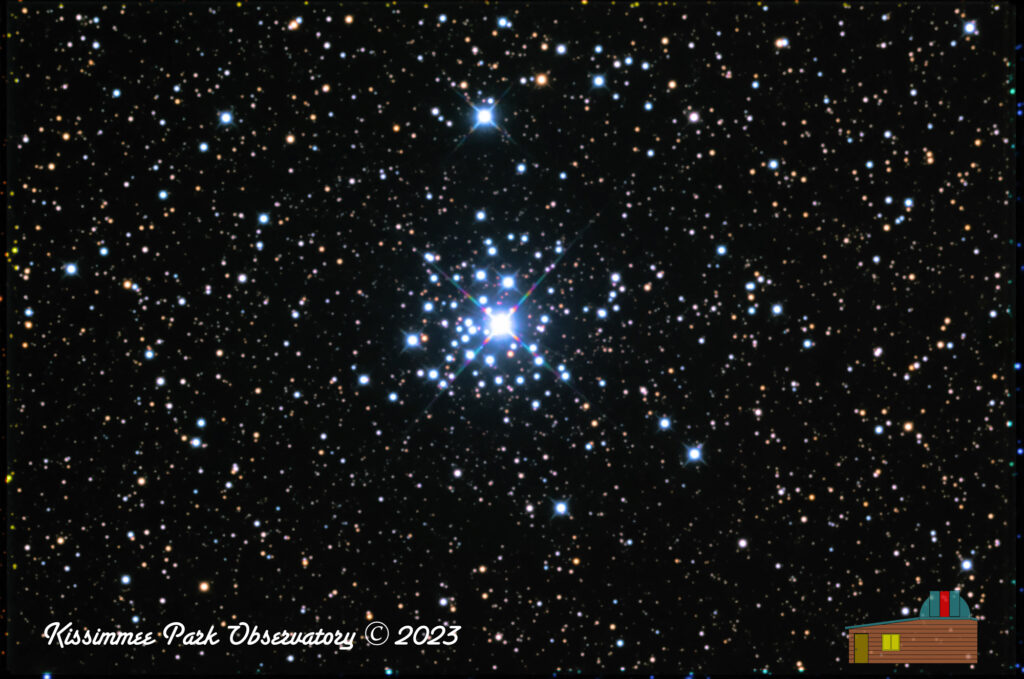Tau Canis Majoris and NGC 2362: Exploring the Enigmatic Star and Its Stellar Neighborhood
Tau Canis Majoris, a captivating star and surrounding open cluster, located surprisingly enough in the constellation Canis Major, has piqued the interest of astronomers and stargazers alike. The star and cluster lie 5000 light years away.
I have always called this star “The Mother and her Children”, due to the swarm of fainter stars (the open star cluster NGC 2362) surrounding the much brighter Tau. It has also been named “The Mexican Jumping Star” due to the odd visual display that is seen when the telescope is bumped while viewing the object.
This massive star is classified as a blue-white B-type giant, indicating its immense size and intense luminosity. With a visual magnitude of 4.37, Tau Canis Majoris is generally visible to the naked eye, and is easily seen with a pair of binoculars. Tau is located about two degrees west of the bright star Wezen in Canis Major.
One of the most interesting features of Tau Canis Majoris is its status as a binary star system. The primary star, Tau Canis Majoris A, is itself a spectroscopic binary, meaning that it appears as a single point of light to observers on Earth, but it is actually composed of two stars orbiting each other. This adds an extra layer of complexity and intrigue to the star, as scientists seek to understand the dynamics and interactions between the two components of this binary system.
The secondary star, Tau Canis Majoris B, is a fainter companion to the primary star, and its properties and relationship with Tau Canis Majoris A continue to be the subject of ongoing research and observation. The study of binary star systems like Tau Canis Majoris provides valuable insights into stellar evolution, dynamics, and the behavior of stars in close proximity to each other.
As we continue to explore and study the enigmatic Tau Canis Majoris and its stellar neighborhood, it serves as a reminder of the vast and wondrous nature of the universe. Its beauty and complexity inspire us to delve deeper into the mysteries of the cosmos, and its presence in the night sky invites us to gaze in awe and wonder at the celestial marvels that surround us.
Image Info
- Imaged from KPO, in Saint Cloud, Florida
- Camera : ZWO ASI1600MM Pro
- Scope: Orion RC-12 Ritchey-Chretien Astrograph, 2450mm fl, F/8
- Mount: iOptron CEM-120
- Red: 5 subframes of 180s = 15 min integration
- Green: 5 subframes of 180s = 15 min integration
- Blue: 5 subframes of 180s = 15 min integration
- Total integration time: 45 min = 0.75 hours.
- Captured via ASIAir Pro automation
- Optical tracking via ASIAir automation via the ASI120MM-S guide camera
- Separate channels stacked and LRGB integrated in Astro Pixel Processor
- Image cropped and stretched in Nebulosity.
- Image run through Super DeNoising
- Final processing in Aperture

